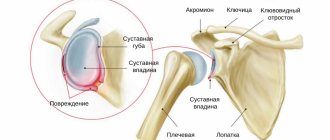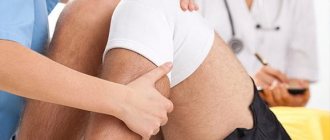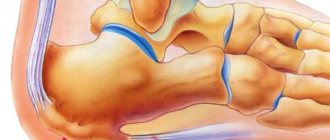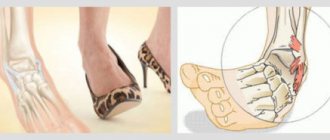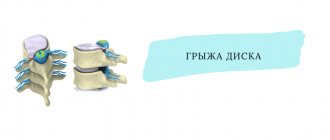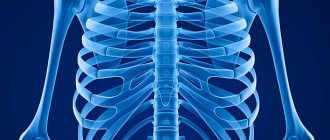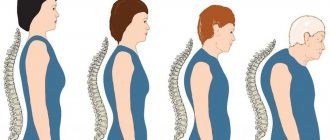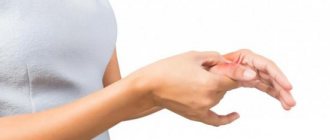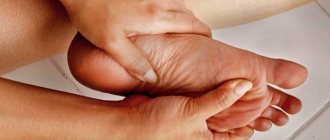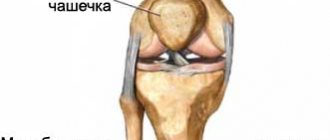Many users are interested in the specifics of hearing injury, possible consequences and ways to solve cosmetic problems. This article will describe whether it is possible to break an ear, what symptoms arise and how to provide first aid.
Ear fracture is an umbrella term that covers several categories of injury related to the craniofacial region. A broken area, no matter where it is localized, requires complex treatment and long-term rehabilitation. In order to determine whether a person’s ear is damaged, one should rely on the symptoms and signs described below.
Is it possible to break an ear?
In humans, the ear consists of elastic cartilage and lobe, which protect the eardrum from injury.
An ear fracture is a violation of the integrity of the bone walls of the external, middle or internal parts of the hearing organ.
The auricle does not contain bones, only cartilage, so if it is damaged, we can conditionally speak of a fracture.
This injury is common among professional wrestlers and boxers. Children can break their ears during contact sports and active games. This injury is rare in older people.
Causes of ear injuries
For adults, the danger of damaging ear cartilage in everyday life always exists. Ear injury can occur due to:
- falls;
- practicing contact sports;
- animal or insect bite;
- traffic accident;
- severe bruise;
- gunshot wound.
Symptoms
The most common type of injury is wounds to the external ear. They can be punctured, cut, bruised, torn. And in depth - superficial and deep. The wound is a violation of the integrity of the skin, accompanied by pain and bleeding.
Damage to the external auditory canal occurs less frequently than injury to the auricle. It may be associated with a bullet or shrapnel wound. Such an injury can be caused by a blow with a sharp or blunt object, as well as the entry of a foreign object, hot steam or liquid, or caustic chemicals into the area of the external auditory canal.
In case of injury to the outer ear with damage to the ear canal, the patient experiences pain in the ear and a feeling of severe congestion, and bleeding is possible.
Signs of a Broken Ear
The severity of the deformity can be determined by the symptoms present. When a fracture occurs:
- visual deformation of the hearing organ;
- the presence of a hematoma behind the auricle;
- severe or aching pain;
- hearing loss to the point of complete loss;
- bleeding or fluid from the ear;
- subcutaneous emphysema of the nose and face;
- difficulty moving the jaw, accompanied by pain;
- violation of tissue integrity;
- dizziness.
How to determine a fracture in a child
Violation of the integrity of soft tissues in children is manifested by redness of the ear. If there is internal damage, the child will have difficulty with facial expressions and jaw movements.
The baby may not tell you that his ear hurts, so carefully monitor the manifestation of characteristic symptoms.
Injury to the ear cartilage in children can be detected by the following signs:
- causeless anxiety;
- bruise or bruise behind the ear;
- crying when the ear area is touched;
- change in ear shape (bend, break);
- blood from the ear;
- constant itching (the child often touches the ear);
- refusal to eat due to pain when opening the mouth.
Article on the topic: Analogues of the drug Anaprilin: instructions for use
Treatment
First, the doctor examines the patient to assess the damage. Additionally, otoscopy may be required - a method for diagnosing ear diseases.
Treatment is prescribed depending on the degree of damage. The following is used as therapy:
- medicines;
- physiotherapy;
- laser therapy;
- surgical intervention.
Drug treatment
In non-serious cases, a specialist may prescribe medication. For this purpose, various groups of drugs are used:
- painkillers – relieve discomfort;
- anti-inflammatory – help reduce inflammation;
- antibacterial – used to prevent and treat bacterial infections;
- diuretics – remove excess water, help get rid of swelling;
- calcium-containing – replenish the deficiency of the microelement and accelerate the fusion of cartilage;
- vitamin complexes. They are necessary to compensate for the deficiency of nutrients. You can find many vitamin complexes in the pharmacy chain, so the patient will choose the one he likes.
Attention! It is prohibited to self-prescribe medication. Treatment is selected by the doctor based on individual characteristics and type of fracture.
Physiotherapy
Physiotherapy after a fracture helps speed up recovery and avoid various disorders. The use of therapy is possible only on the recommendation of a doctor. Indications for use:
- removal of swelling;
- reduction of pain;
- improving blood circulation in the affected area;
- reduction of the recovery period;
- prevention of infection.
Physiotherapy has contraindications:
- heat;
- open tuberculosis;
- severe damage to the liver and kidneys;
- malignant tumor;
- wearing a pacemaker;
- pregnancy and lactation;
- poor blood clotting;
- childhood.
Laser therapy
The fracture involves the use of laser therapy to speed up recovery. A laser is an optical device that emits electromagnetic radiation. With the help of such therapy, it is possible to speed up the processes of tissue metabolism and healing, relieve inflammation and pain, and reduce swelling. Due to the directionality of the beam, the laser acts exactly in the area it is aimed at. The wavelength allows for deeper penetration compared to chemotherapy. In addition, the laser affects tissues that are inaccessible to the magnetic field.
The following can be identified as contraindications:
- high body temperature;
- open form of tuberculosis;
- sepsis due to a complex fracture;
- malignant neoplasm;
- impaired blood clotting;
- pathologies in the functioning of the hematopoietic organs;
- pregnancy and lactation;
- childhood.
Attention! Before the procedure, it is imperative to warn the doctor about the presence of plates, pins, screws, staples, pacemakers and other foreign devices.
Surgical intervention
Treatment is individual for each patient. If the injury is minor due to an ear fracture, applying a bandage and using lotions is sufficient. But, in more serious cases, surgery is necessary.
If the middle ear is damaged, the area is treated and a sterile bandage is applied. Next, the organ is inspected to remove blood or fluid.
If the injury is extensive and a fragment or the entire ear is lost, this part is sewn back on. The most important thing is to ensure integrity before surgery. To do this, wrap the part with a clean, damp cloth and cover it with ice. The integrity of the organ can be easily restored within 10 hours. After the operation, individual therapy is prescribed.
What to do if you have an ear fracture
If at least two symptoms of ear cartilage damage are present, action should be taken. First provide first aid to the victim. Then take him to the nearest emergency room or hospital for an accurate diagnosis.
Timely treatment will reduce the risk of complications from a fracture.
It is forbidden to self-medicate - this may aggravate the injury.
First aid
Emergency measures for a fracture in adults and children begin with a visual examination of the ear, assessment of its damage, and prevention of panic on the part of the victim. Further algorithm of actions:
- Carefully treat the damaged area with an antiseptic (iodine) to prevent the development of infection.
- Stop bleeding with hydrogen peroxide.
- Make cotton pads, soak them in a disinfecting solution and carefully place them in the ear canal.
- Apply a sterile bandage.
- Wrap your face in a bandage so that the jaw is motionless and the damaged tissue is covered.
- Apply cold to the injured area.
- If part of the ear has been torn off, place it in a sterile ice pack and take it to the hospital with the victim.
Treatment
Therapy for an ear fracture involves restoring tissue and maintaining the functionality of the organ. You should not rinse the ear cavity due to the risk of infection. Treatment depends on the severity of the damage:
- Minor injuries are treated and covered with a sterile bandage. For further treatment, physiotherapeutic procedures, heat therapy and laser are prescribed.
- More serious injuries require a puncture. The procedure involves pumping out accumulated fluid from damaged tissue. Using a syringe, the doctor injects 5-6 drops of iodine tincture into the ear. This helps thicken the liquid, making it easier to remove.
- If the integrity of the auricle is compromised, the surgeon stops the bleeding and applies stitches. If the broken ear is severely deformed, surgical reconstruction is required. If the ear is completely torn off, it is reattached using local anesthesia.
- If the injury is caused by a fall on the chin, both ears are examined. This is done to prevent damage to two cartilages. When the bleeding does not stop or the victim hits his head during a fall, an x-ray is taken. This will help eliminate the possibility of brain or skull injury.
Drug treatment is carried out for fractures of moderate and severe severity. It includes the following groups of drugs:
- Analgesics (Nimulid, Ketanov) – relieve pain.
- Anti-inflammatory drugs (Diclofenac, Affida Fort) - relieve inflammation of connective tissue.
- Antibiotics (cephalosporin) – prevent and eliminate the development of bacterial infection.
- Diuretics (Furosemide) – prevent the development of swelling.
- Vitamins (Calcemin) – promote rapid fusion of cartilage.
- Herbal remedies (chamomile, rosehip) - remove excess fluid, relieve inflammation, which speeds up the healing process.
Article on the topic: Instructions for use of Aqualor baby - indications, composition and dosage
First aid
If an ear is broken, the victim requires first aid. First, calm the person down. Next, perform the following steps:
- Treat the area with an antiseptic solution - Chlorhexidine, Miramistin.
- Apply a cold compress to the damaged area. To do this, you need to place ice or another product in a towel. It is allowed to apply a bottle of cold water to the area.
- If there is bleeding, stop it with a solution. For example, Hydrogen Peroxide.
- Apply a sterile bandage without using solutions.
- If the victim complains of pain, painkillers can be taken. For example, Analgin, Spazmalgon, Bral, Baralgin, Ketorol. You can also take a non-steroidal anti-inflammatory drug (NSAID). For example, Nurofen, Ibuprofen, Mig, Dexalgin. These medications can help reduce pain, swelling and inflammation.
Attention! It is prohibited to clean the ear canal yourself without medical personnel. It is not allowed to insert cotton swabs or sticks into it. It is also not recommended to use drops without a prescription.
Actions should be as careful as possible so as not to move the damaged cartilage. After first aid, you should try to deliver the victim to a medical facility as quickly as possible or call a medical team.
Possible consequences and complications
With minor damage, the shell heals quickly and without negative consequences. But, if the ears are broken and the injury is more serious, the situation changes. There can be various serious consequences - from organ deformation to neurological diseases and complete or partial hearing loss. If the injury occurs with inflammation or the wrong treatment was prescribed, the likelihood of death increases.
To prevent negative consequences that may lead to disability, it is necessary to undergo diagnostics. Therefore, if symptoms appear, you should immediately make an appointment with a doctor. In addition, it is very important to follow all treatment recommendations.
Rehabilitation
Basic rules that will speed up the rehabilitation process:
- limited physical activity;
- taking antibacterial agents and vitamin complexes as prescribed by a doctor;
- careful treatment of the damaged organ. And this is especially true for sleep;
- taking herbal remedies that speed up the healing process. For example, chamomile or rosehip.
The duration of the recovery period varies and depends on the individual characteristics of the body, as well as the severity of the damage.
Non-inflammatory ear diseases
Most often, people suffer from these non-inflammatory ear diseases:
- Otosclerosis of the ear is a hereditary disease that causes lesions and changes in part of the bone of the ear. Most often, this disease is treated with surgery, otherwise the patient may lose up to 90% of his hearing.
- Meniere's disease. Causes fluid to accumulate in the inner ear, which negatively affects the hearing aid. It is worth paying attention to sudden attacks of nausea, tinnitus and dizziness, poor functioning of the vestibular apparatus - all these are symptoms of Meniere's disease
- Neuritis of the vestibulocochlear nerve is a very severe pathology that can lead to hearing loss
How are non-inflammatory processes treated?
There are several popular and high-tech methods for treating ear diseases in humans:
- laser treatment
- ultrasound treatment
- radio wave therapy
- endoscopy
- cryosurgery
A professional specialist using modern equipment can cure almost any disease of the hearing aid and restore lost hearing.
